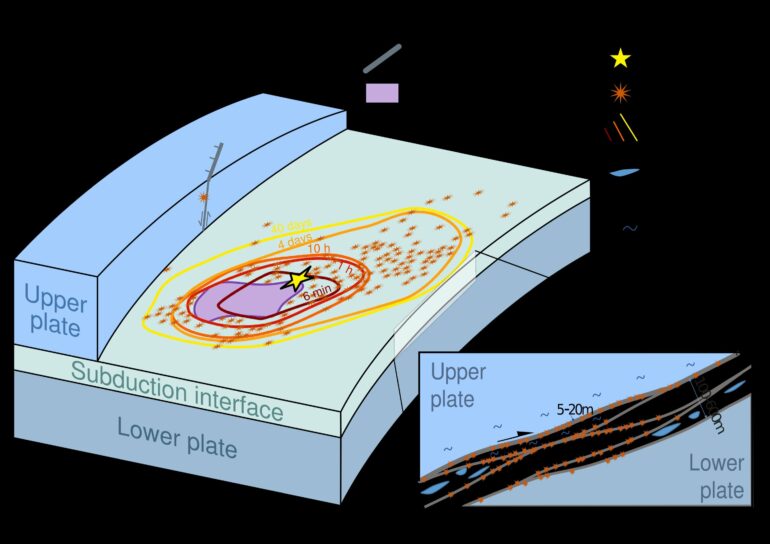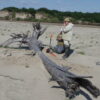When a fault ruptures in nature, some sections of the fault slip suddenly and seismically, weakening as velocity increases. Other regions creep slowly and strengthen with increasing velocity. The relative locations of these sections affect the size and nature of seismic activity along the fault. In one common configuration, a velocity-weakening section is surrounded by a velocity-strengthening section, which stops the spread of ruptures.
Scientists use multiple techniques, including modeling and laboratory experiments, to re-create and better understand faulting behavior. In laboratory experiments, researchers build small-scale models of faults using materials such as rock and plastic to see how they respond to ruptures.
However, current methods have various pitfalls. For instance, most experiments use samples that have uniform, velocity-weakening properties. Others have used powders, known as fault gouge, composed of different minerals to re-create velocity-weakening and velocity-strengthening sections, but gouge can compact inconsistently and complicate the results.
In a new study published in the Journal of Geophysical Research: Solid Earth, Jun Young Song and Gregory C. McLaskey created a technique to more easily represent natural fault ruptures in a laboratory setting. They built the entire model fault out of plexiglass, or acrylic, which is known to be velocity weakening.
Rather than using a different material entirely, they coated the outer areas of the fault interface with famously low-friction Teflon to mimic a velocity-strengthening area that surrounds a velocity-weakening area. This created a heterogeneous fault similar to the conditions found in nature without the gouge used in other experiments.
The researchers found that when they increased the amount of normal stress on the plexiglass and Teflon fault or when they increased the size of the velocity-weakening area, the slip behavior changed from stable slip movement to more irregular stick-slip events—similar to how many faults move in nature.
In addition, they noted that when there was no velocity-strengthening material confining the fault rupture, seismic waves were radiated less efficiently than in nature. These findings could be helpful for understanding the relationship between the rupture lengths of faults and earthquake behavior.
More information:
Jun Young Song et al, Laboratory Earthquake Ruptures Contained by Velocity Strengthening Fault Patches, Journal of Geophysical Research: Solid Earth (2024). DOI: 10.1029/2023JB028509
Provided by
American Geophysical Union
This story is republished courtesy of Eos, hosted by the American Geophysical Union. Read the original story here.
Citation:
The secret to mimicking natural faults? Plexiglass and Teflon (2024, May 13)



